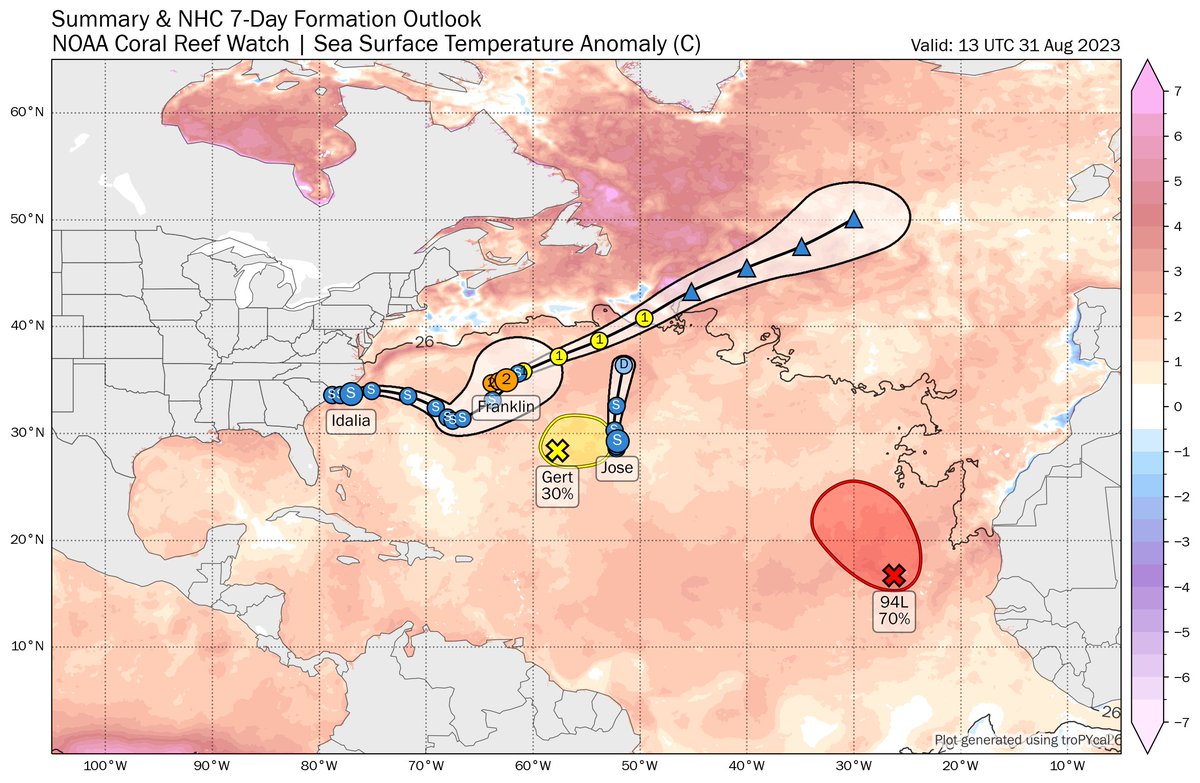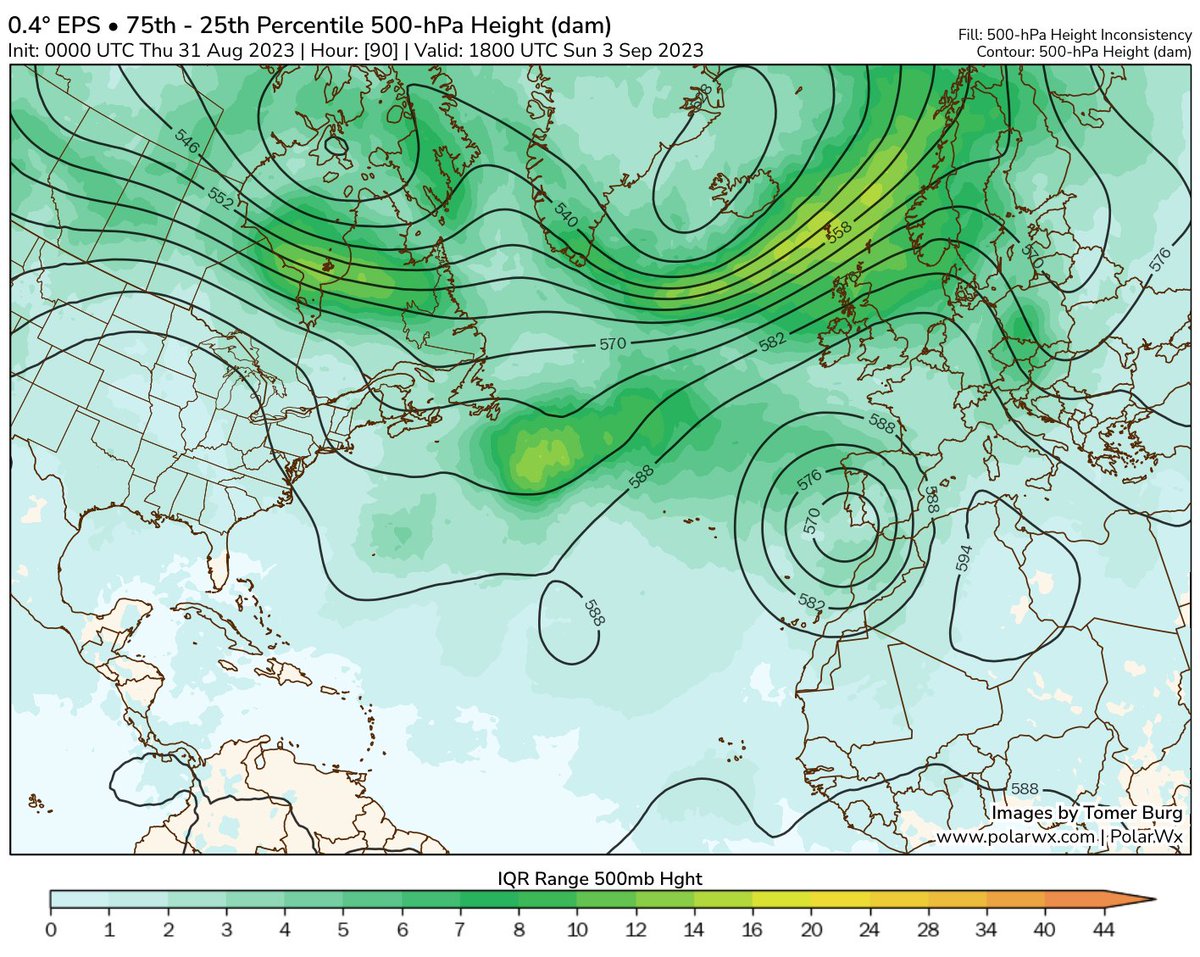Here's a look at the multi-model ensemble forecast track for Beryl over the last 12 days.
There was a clear picture of a long-track Caribbean storm, but with larger errors for its ultimate Gulf landfall location - ensemble tracks ranged from the Bay of Campeche to New Orleans.
There was a clear picture of a long-track Caribbean storm, but with larger errors for its ultimate Gulf landfall location - ensemble tracks ranged from the Bay of Campeche to New Orleans.
Coarse global ensembles were consistently too weak & too far south with Beryl once it passed west of Jamaica, accordingly depicting its Gulf landfall too far south.
Short-term observations vs. forecasts made it easier to rule out the outliers:

Short-term observations vs. forecasts made it easier to rule out the outliers:
https://x.com/burgwx/status/1808285975627407820

Intensity errors were quite large in the Gulf - Beryl was disrupted by dry air more than most models anticipated, and accordingly many ensembles & hurricane models incorrectly showed a major hurricane landfall.
Some others, like the GFS/HAFS, were far too weak in the Gulf.
Some others, like the GFS/HAFS, were far too weak in the Gulf.

The ICON particularly received attention for being consistently east of & stronger than most models, which were too weak & too far south.
The ICON, however, was still too strong & too slow/far east vs. verification:
The ICON, however, was still too strong & too slow/far east vs. verification:
Some models can also be right for the wrong reason.
The 7/2 12z cycle of the HWRF did much better than other hurricane/global models with Beryl's track and right turn... but had Beryl emerging into the Gulf intact with 974 hPa min MSLP. Verification was 998 hPa.


The 7/2 12z cycle of the HWRF did much better than other hurricane/global models with Beryl's track and right turn... but had Beryl emerging into the Gulf intact with 974 hPa min MSLP. Verification was 998 hPa.


• • •
Missing some Tweet in this thread? You can try to
force a refresh























